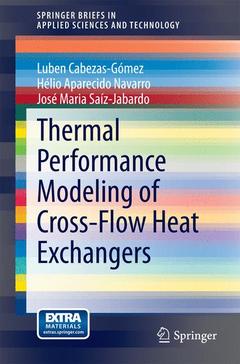Description
Thermal Performance Modeling of Cross-Flow Heat Exchangers, 2015
SpringerBriefs in Applied Sciences and Technology Series
Authors: Cabezas-Gómez Luben, Navarro Hélio Aparecido, Saíz-Jabardo José Maria
Language: English
Subjects for Thermal Performance Modeling of Cross-Flow Heat Exchangers:
52.74 €
In Print (Delivery period: 15 days).
Add to cart226 p. · 15.5x23.5 cm · Paperback
Description
/li>Contents
/li>Comment
/li>
This monograph introduces a numerical computational methodology for thermal performance modeling of cross-flow heat exchangers, with applications in chemical, refrigeration and automobile industries. This methodology allows obtaining effectiveness-number of transfer units (e-NTU) data and has been used for simulating several standard and complex flow arrangements configurations of cross-flow heat exchangers. Simulated results have been validated through comparisons with results from available exact and approximate analytical solutions. Very accurate results have been obtained over wide ranges of NTU and C* values in all cases. The proposed procedure constitutes a useful research tool for both theoretical and experimental studies of cross-flow heat exchangers.
The following are the unique features of the book:
- The monograph includes the computational code named HETE (Heat Exchanger Thermal Effectiveness) in Chapter 5. A version of this code is available for downloading.
- The computational procedure could be used for reducing experimental data using the effectiveness - NTU (e-NTU) method in research and industrial laboratories.
- Even after more than one century in heat exchanger research, the search for new flow arrangements with higher effectiveness still is an unsolved problem. The present methodology could be a useful tool in pursuing that goal.
These books may interest you

Heat Exchanger Design Handbook 293.12 €



